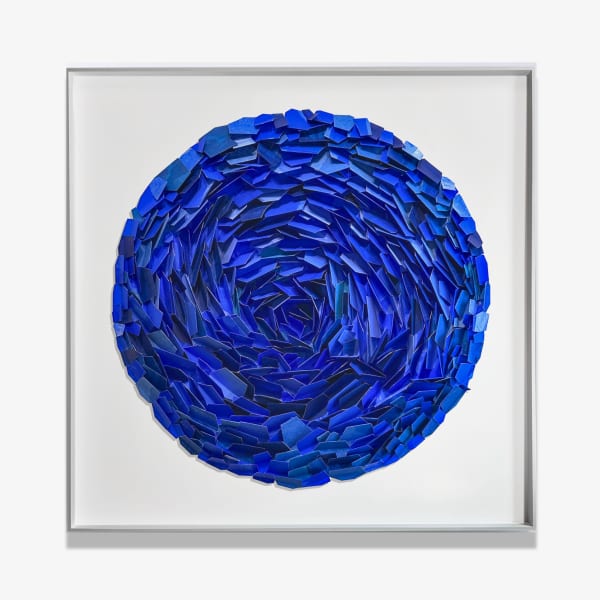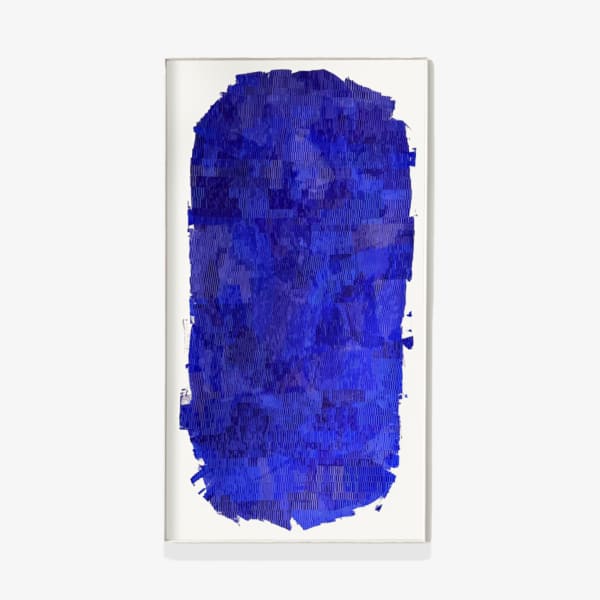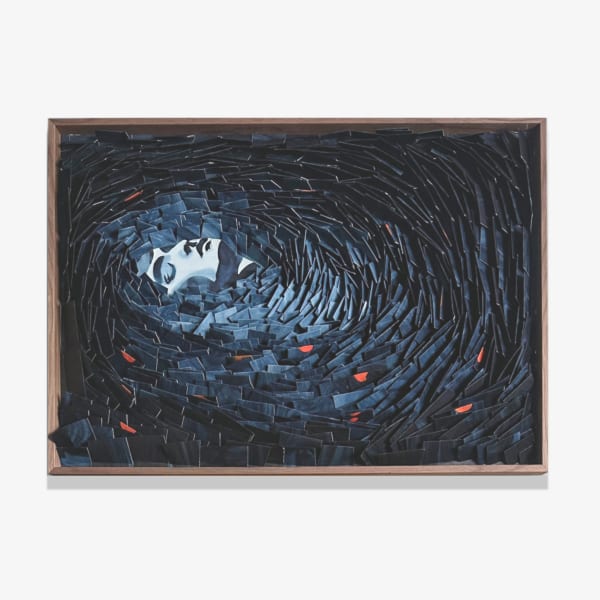Ian Fenton's art practice places cut paper not at the margins, but firmly at the centre of serious artistic enquiry. Working primarily with large-format, hand-painted paper, he uses water-based paints and inks to build layered, tactile compositions. Every tear, cut and brushstroke is made by hand—nothing is digital. This deliberate, physical process embraces the integrity of materials and invites close, attentive looking.
Collage is often seen as a sideline in Western art history, something casual or associated with childhood, amateurism or with the last years of Matisse. But I’m interested in what happens when we start from that place, and push cut paper as a serious, expressive form. For me, it’s not a fallback, it's the heart of the work.
Fenton’s palette is restrained: predominantly shades of blue, punctuated by interruptions of orange. This chromatic discipline is more than aesthetic — it holds emotional intensity and restraint in tension, offering a kind of freedom through limitation.
There’s a balance in what I do between experimentation with materials and a more personal, inward focus. While the compositions are often semi-abstract, they’re shaped by memory, reflection, or a response to literature. Recent works, for instance, draw on The Waste Land by T. S. Eliot, not as illustration, but as emotional and thematic ground. Some pieces are personal tributes, like the veiled figure in Dubhghaill, or Himavant, which speaks to our world’s current anxieties.
Fenton works from his studio in Brighton. While he does not set out to make work overtly about identity, his perspective as a queer Irish artist inevitably shapes both the context and sensibility of his practice. Themes of dislocation, reverence and quiet emotion thread through his work. He is not drawn to spectacle, but to depth, clarity and the quiet insistence that certain materials — and certain personal experiences — belong at the heart of his practice.
-
 Ian FentonComposition in Ultramarine and Prussian Blue II, 2025Cut paper, gouache
Ian FentonComposition in Ultramarine and Prussian Blue II, 2025Cut paper, gouache
Framed: White panel, slim tray frame (no glass)120 x 120 cmView more details -
 Ian FentonComposition in Ultramarine and Prussian Blue I, 2025Cut paper, gouache on 200gsm paper
Ian FentonComposition in Ultramarine and Prussian Blue I, 2025Cut paper, gouache on 200gsm paper
Framed: White panel, slim tray frame (no glass)210 x 150 cmView more details -
 Ian FentonPhlebas The Phoenician, 2025Cut paper, gouache
Ian FentonPhlebas The Phoenician, 2025Cut paper, gouache
Framed: Wood, slim tray frame (no glass)60 x 85 cmSoldView more details




